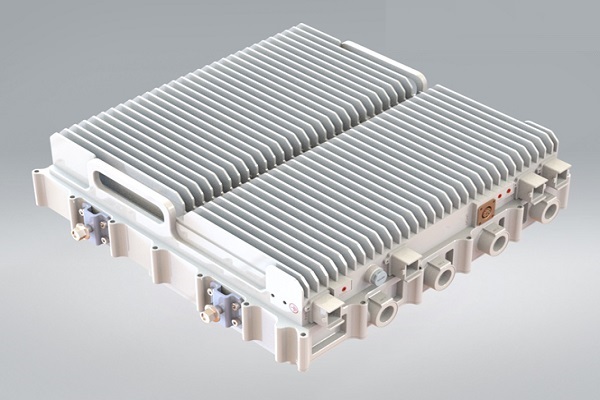OVERVIEW OF THE AL SHAMIYA EXPANSION PROJECT IN MAKKAH, SAUDI ARABIA:
The Al Shamiya Expansion Project in Makkah, Saudi Arabia stands as a transformative endeavor aimed at reshaping the landscape and infrastructure of this revered city. With ambitious objectives and a comprehensive scope, this project holds the potential to not only enhance the local economy and community but also to set new standards for sustainable development. From infrastructure improvements to environmental considerations, the Al Shamiya Expansion Project is a crucial achievement in the continuous progress of Makkah and represents a significant development endeavor aimed at enhancing infrastructure, economic growth, and sustainability in the region. The implementation of the project includes the establishment of a new network of roads to enhance the pilgrimage experience. As a result, the Haram Mosque will have the capacity to accommodate four million pilgrims, which is four times its current capacity. The Al Shamiya Expansion Project aims to modernize Makkah's infrastructure, improve transportation systems, and enhance the overall quality of life for residents and pilgrims. This project will contribute to the city's sustainable growth and development. The Al Shamiya Expansion Project includes an underground tunnel infrastructure that provides efficient and direct routes, enhancing connectivity between communities. Niharika Computational Engineering Solutions Pvt Ltd (NCES) is honored to have been chosen for this significant project and are committed to delivering exceptional results.
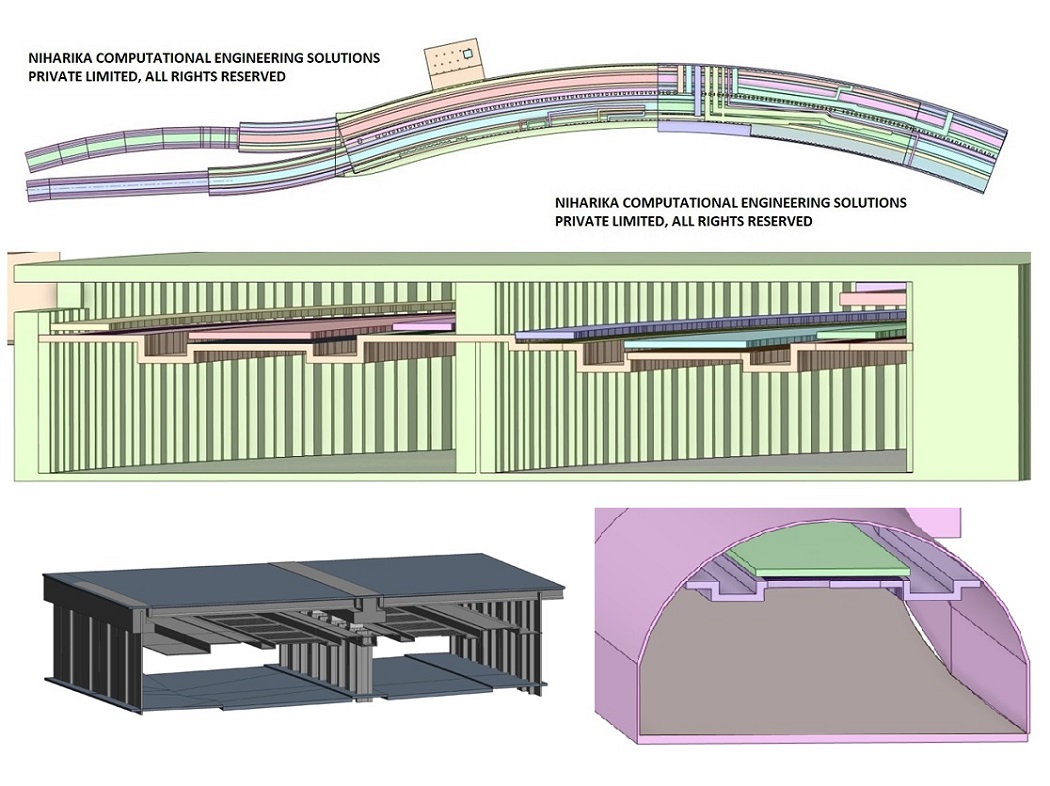
CFD ANALYSIS TO OPTIMIZE TUNNEL VENTILATION SOLUTIONS
To ensure a safe and healthy environment within the tunnel, it is crucial to have a dependable ventilation system. This system will ensure a continuous supply of fresh air, minimizing the concentration of air pollutants during regular tunnel operations. Additionally, it will effectively extract smoke gases in case of emergencies. Utilizing Computational Fluid Dynamics (CFD) analysis for tunnel ventilation has become increasingly crucial in ensuring the safety, efficiency, and comfort of tunnel users. CFD analysis provides valuable insights into airflow patterns, temperature distribution, and pollutant dispersion within tunnels. Engineers can leverage these results to optimize ventilation strategies, such as adjusting fan placement or duct configurations, to enhance overall ventilation performance and user safety. By leveraging CFD simulations, stakeholders can make informed decisions that optimize airflow, minimize pollutants, and improve overall ventilation effectiveness. Our Computational Fluid Dynamics (CFD) simulation outcomes have allowed our client to comprehend the flow evolution within the entire tunnel and have faith in the suggested Jet fans and different operational configurations of motorized dampers for smoke extraction during emergencies. Our accurate HVAC CFD analysis results have empowered our client to make informed engineering choices for improved resource efficiency and safety adherence.
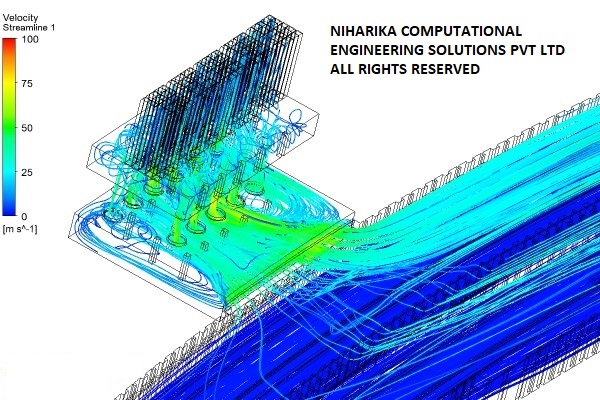
3D CAD MODEL DEVELOPMENT
A 3D CAD model is developed in accordance with the requirements of the CFD analysis, utilizing the 2D AutoCAD drawings supplied by the client. The model incorporates systems that contribute to pressure losses in the false ceiling area, such as RCC beams, water lines, and refrigeration ducts, based on the drawings and information gathered during the site visit. Key components modeled within the tunnel include approach tunnels, partition walls that separate lanes, water curtains, and motorized dampers. Additionally, the fan room, which connects to the false ceiling area, is modeled along with all associated systems. The CAD model is created using PTC Creo 3D CAD software, and a STEP file is provided for client approval.
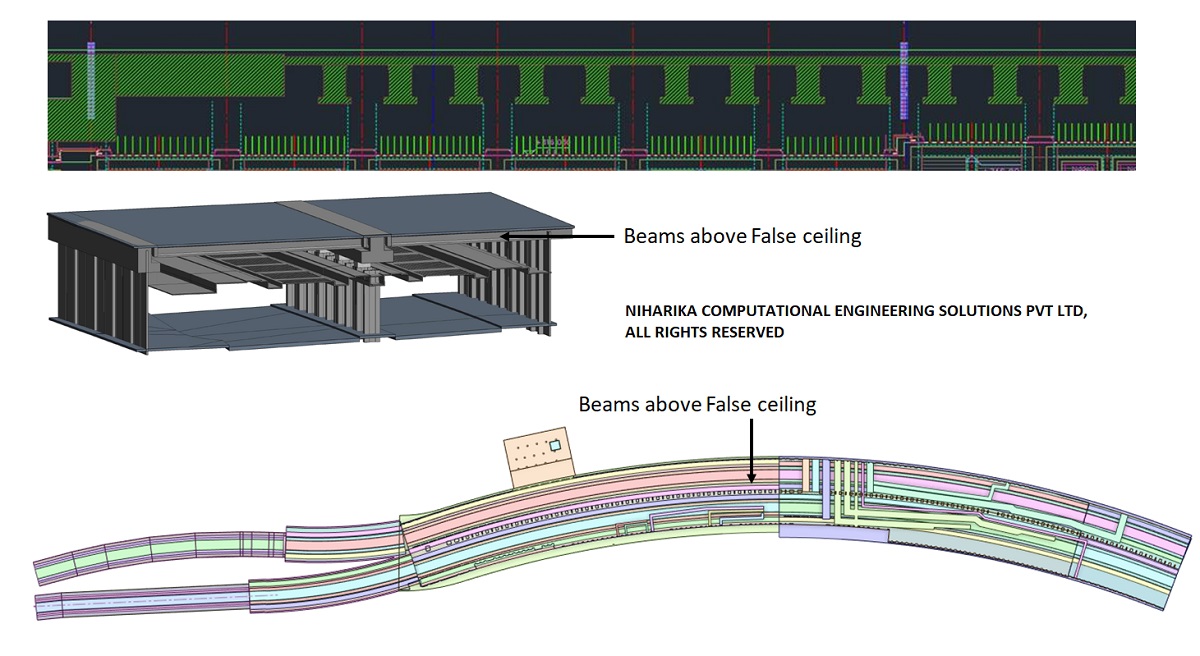
CFD Mesh
The CFD mesh has been created based on the CAD model that received Client approval. The total mesh count is 38 million. Finer elements have been utilized in areas with high gradients, specifically within the false ceiling and fan room zones. The mesh is composed of Poly Hex core elements that meet the quality standards established by CFD analysis best practices, leading to a well-converged CFD solution.
CFD Modelling
The flow is represented as three-dimensional, steady-state, viscous, incompressible, and turbulent. The K-Omega SST turbulence model is employed for turbulence closure to enhance the accuracy of the results. Fans are represented using a custom Fan boundary condition, which incorporates the fan curve supplied by the manufacturer. Computational Fluid Dynamics (CFD) analysis is performed for different combinations of motorized damper openings, and the pressure loss in the false ceiling area is evaluated.
Overall Flow Development
Pressure losses caused by different obstructions in the false ceiling area, such as RCC beams, HVAC ducting, and water pipelines, will affect the performance of the evacuation fans located in the fan room. This fan room is linked to the false ceiling space, which in turn connects to the transport lanes of the tunnel via openings created by motorized dampers. A comprehensive analysis of the overall flow development is conducted for various operating sequences of these motorized dampers.
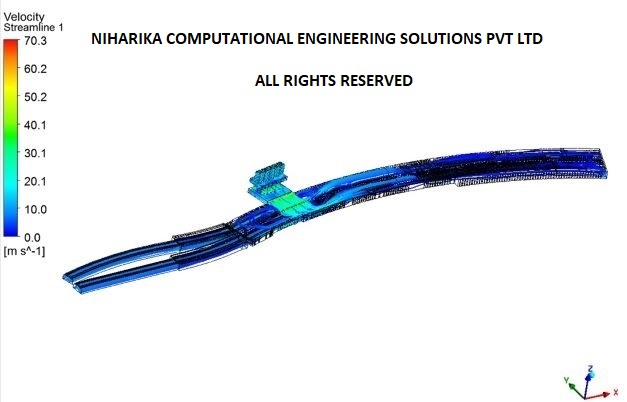
Pressure Field
The pressure field derived from the CFD analysis is examined to evaluate the appropriateness of the specifications for the evacuation fans chosen during the design phase. Additionally, the pressure field is analyzed across different operational sequences of the motorized dampers.
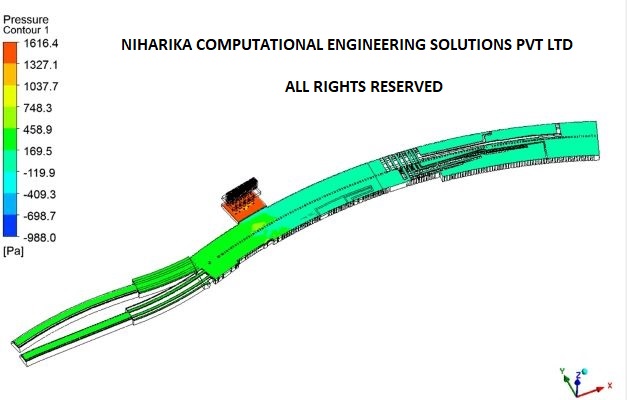
Motorised dampers operation sequence
It is crucial to examine different emergency situations within transport tunnels, as they significantly affect human safety. Computational Fluid Dynamics (CFD) analysis is performed for various operational sequences of the motorized dampers that link the tunnel airflow to the evacuation fans through the false ceiling area.
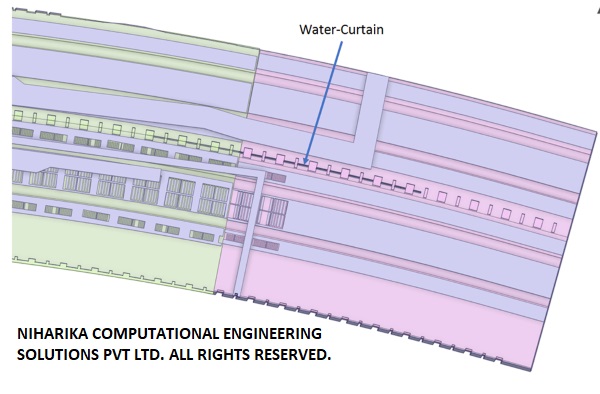
We Got More
Go through All Our Case Studies
CFD analysis to predict flow development in wind turbine blade mold facility-LM Wind Power-India
We carried out CFD analysis for the HVAC Jet Nozzle system proposed in the Wind turbine blade molding division at the LM wind power blade manufacturing plant in Bangalore. The blade manufacturing plant consists of four molding bays; for each bay, cold air will be supplied through 2 AHU units. Each AHU unit is connected to 40 Jet Nozzles. The main objective of CFD analysis is to analyze airflow, air-impinging angle, and the flow regime. The flow regime plays a significant role from Health and safety perspective. We have explained our results to the Management of LM Wind power and recommended suggestions for Improvement. Read MoreOptimization of hot and cold aisle rack/cabinet configuration in a data center using CFD analysis
The hot and cold aisles in the data center are part of an energy-efficient layout for server racks and other computing equipment. The goal of a hot/cold aisle configuration is to manage airflow in a way that conserves energy and lowers cooling costs. A containment system isolates hot and cold aisles from each other and prevents hot and cold air from mixing. Our client is executing a turnkey contract for a bank data center in Kuwait. We worked with our client from the beginning stage of the project and assisted them with our Computational Fluid Dynamics (CFD) analysis results. Our CFD analysis results have enabled our client to arrive at the best operating sequence of the cooling units. Read More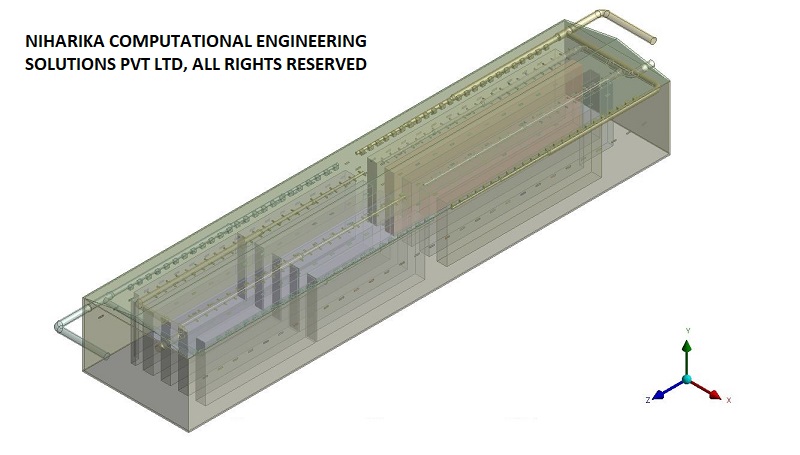
CFD analysis of Vaccine cold Storage warehouse HVAC System
A vaccine storage facility being constructed by Agility Pharma Logistics in Saudi Arabia requires an in-depth investigation of airflow dynamics and cooling processes within the warehouse through CFD analysis. To address this need, the contractor responsible for the cooling system has engaged Niharika Computational Engineering Solutions Pvt Ltd to perform a thorough CFD analysis and evaluate the air distribution in the planned ducting system. Read More
Turnkey solution to Wind Induced Noise in High Rise Building:Mahindra Windchimes Residential Tower01and02,Bangalore
Mahindra Windchimes is a high-rise residential complex situated on the outskirts of Bangalore, directly exposed to winds from the Bannerghatta reserved forest area. Residents have reported significant acoustic disturbances in the reception and common areas on the ground and first floors of Towers 01 and 02. To address this concern, Mahindra Life Space Developers Limited has engaged Niharika Computational Engineering Solutions Private Limited (NCES) for a comprehensive engineering project. Read More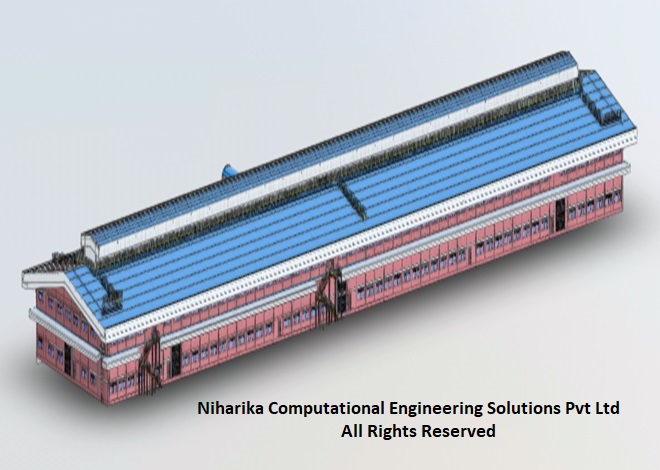
CFD analysis of Ventilation System in Shoe Manufacturing Factory-Taiwan Client
A construction engineering firm based in Taiwan has reached out to us for a CFD analysis to evaluate the effectiveness of the ventilation system in a shoe manufacturing facility currently under development. The project involves performing CFD analysis under various wind speed and ambient temperature scenarios in accordance with ISHRAE standards. Read More